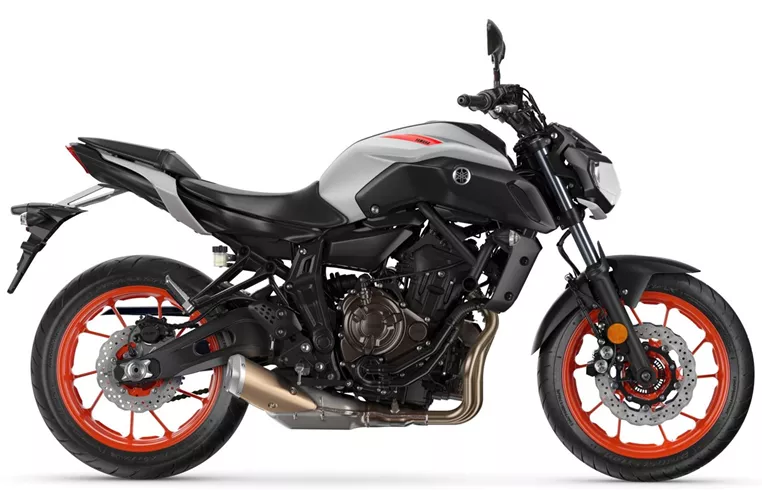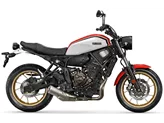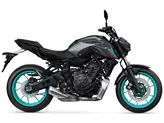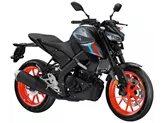Yamaha R1 2015 vs. Yamaha MT-07 2020

Yamaha R1 2015
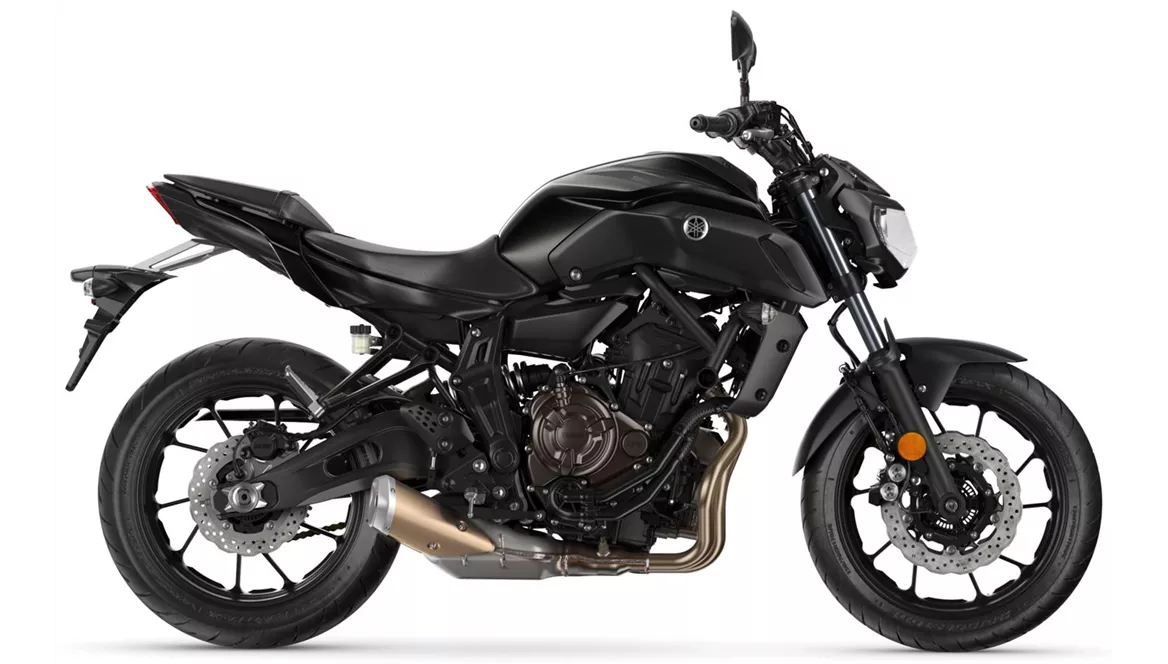
Yamaha MT-07 2020
Overview - Yamaha R1 2015 vs Yamaha MT-07 2020
The Yamaha R1 model year 2015 and the Yamaha MT-07 model year 2020 are two distinct motorcycles with different characteristics and target audiences.
Starting with the technical specifications, the Yamaha R1 2015 is a supersport bike equipped with a 998cc engine. It has a bore of 79mm and a stroke of 50.9mm, resulting in a high-revving engine that produces 200 horsepower and 112.4 Nm of torque. The compression ratio is 13:1, and it features a liquid cooling system. The R1 has a four-cylinder engine with four valves per cylinder, controlled by a DOHC system. The front suspension consists of an Upside-Down telescopic fork, and the frame is made of aluminum. It has double disk brakes on the front, with a front tire width of 120mm and a diameter of 17 inches. The rear tire has a width of 190mm and a diameter of 17 inches. The wheelbase is 1405mm, and the seat height is 855mm. The R1 weighs 199kg (with ABS) and has a fuel tank capacity of 17 liters.

Yamaha R1 2015
On the other hand, the Yamaha MT-07 2020 is a naked bike with a 689cc engine. It has a slightly larger bore of 80mm and a stroke of 68.6mm, resulting in a different engine character. The MT-07 produces 75 horsepower and 68 Nm of torque, with a compression ratio of 11.5:1. Like the R1, it has a liquid cooling system and a two-cylinder engine with four valves per cylinder controlled by a DOHC system. The front suspension consists of a telescopic fork, and the frame is made of steel. It also has double disk brakes on the front, with a front tire width of 120mm and a diameter of 17 inches. The rear tire has a width of 180mm and a diameter of 17 inches. The wheelbase is slightly shorter than the R1 at 1400mm, and the seat height is lower at 805mm. The MT-07 weighs 182kg (with ABS) and has a fuel tank capacity of 14 liters.
In terms of strengths, the Yamaha R1 2015 is known for its crazy sound and rev-happy engine. It provides a great racing feeling in the saddle and has a superior electronics package. Additionally, the R1 is praised for its high-quality workmanship. On the other hand, the Yamaha MT-07 2020 is appreciated for its high-torque two-cylinder engine and well-done chassis set-up. It is considered easy to ride, with a pleasant seating position. The MT-07 also offers a large selection of accessories and is often praised for its price-performance ratio.

Yamaha MT-07 2020
However, both models have their weaknesses. The Yamaha R1 2015 experiences torque sag in the middle, which can affect its performance. It also has stability issues in the braking zone. On the other hand, the Yamaha MT-07 2020 is criticized for its optics and fittings, which some find to look a bit plain or uninspiring. Additionally, some riders feel that the controls on the handlebars feel cheap.
In summary, the Yamaha R1 2015 and the Yamaha MT-07 2020 are two different motorcycles with distinct characteristics and target audiences. The R1 is a high-performance supersport bike with a powerful engine and advanced electronics, while the MT-07 is a more accessible naked bike with a focus on torque and easy handling. Both models have their strengths and weaknesses, offering different riding experiences to suit different preferences and needs.
Technical Specifications Yamaha R1 2015 compared to Yamaha MT-07 2020
Pros and Cons in comparison
Pros and Cons in comparison
Yamaha R1 2015

The new R1 is a big hit and no longer compares to the previous model. This was considered a good country road bike and heavy investments had to be made for excursions to the race track. Now it is the other way round. The new R1 has been developed with a clear focus on the race track. The electronics package seems outstanding, technology freaks will get their money's worth. Yamaha fans have to buy it, they finally have a worthy motorbike. The R1 has slight weaknesses when braking - it becomes a little unstable here. If you want to buy a ready-made racing bike without having to work on the chassis, you'd better go for the R1M. The Öhlins electronic suspension works perfectly and has no weaknesses. For pure racetrack use, the second weakness of the R1 can easily be ironed out. The torque hole in the middle can be easily ironed out with a new mapping.
Yamaha MT-07 2020
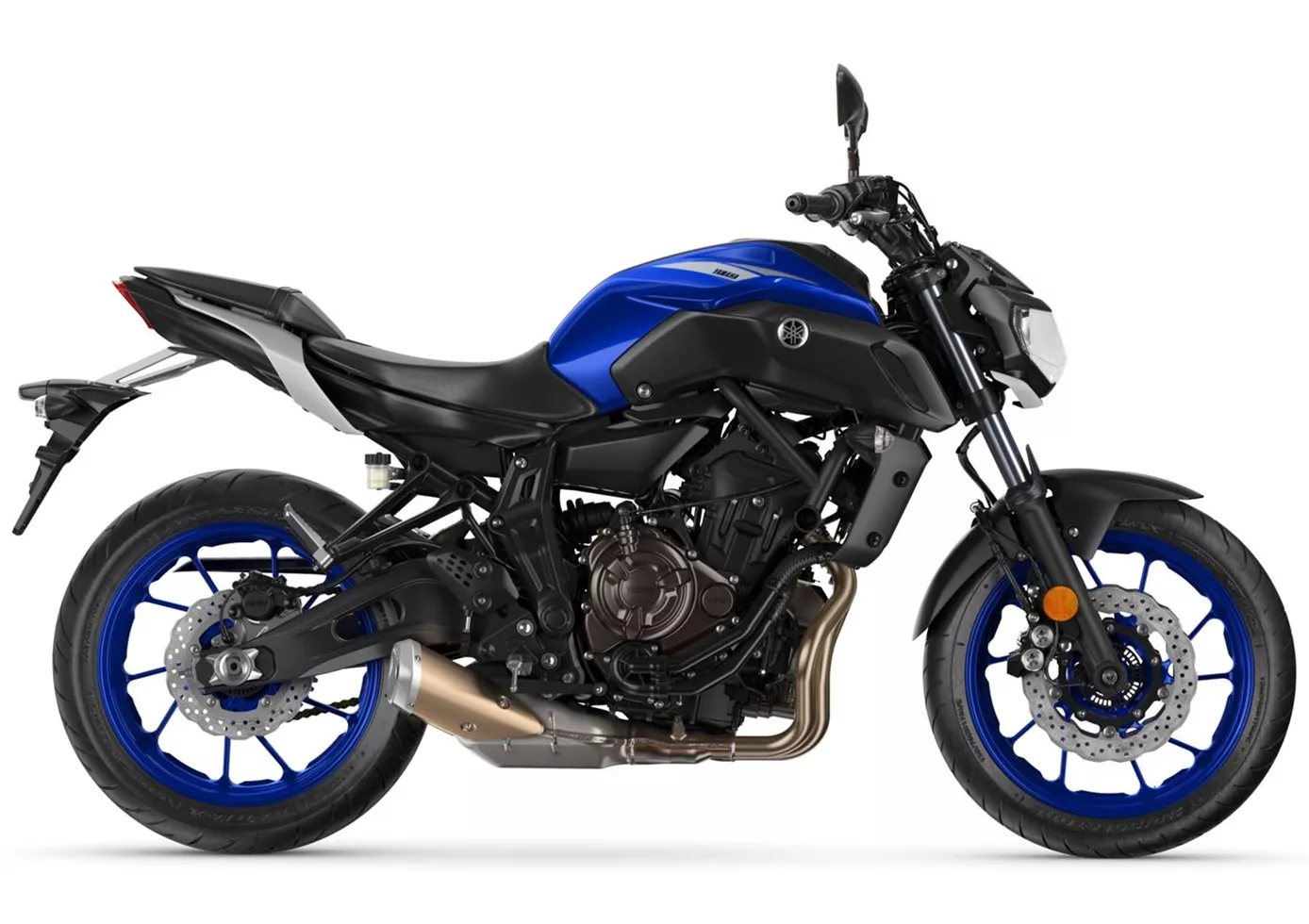
The MT-07 is a wonderful fun machine that is extremely sporty to ride. The brakes pack a punch and the engine is currently by far the most agile powerplant in this class - and perhaps even above. The light handling fits in perfectly and the chassis makes the understandable compromise between comfort and sport - reminding us that the affordable MT-07 should also have a lot to offer beginners. Only the design with halogen headlights and conventional forks is rather old-fashioned.
Price Comparison Avarage Market Price Yamaha R1 vs Yamaha MT-07
There are a few key differences between a Yamaha R1 2015 and a Yamaha MT-07 2020. It takes less time to sell a Yamaha MT-07 with 69 days compared to 76 days for the Yamaha R1. Since model year 2005 1000PS.de editors have written 80 reviews for the Yamaha R1 and 69 reviews for the Yamaha MT-07 since model year 2013. The first review for the Yamaha R1 was published on 4/28/2003 and now has more than 3,900 views. This compares to more than 12,600 views for the first review on Yamaha MT-07 published on 11/4/2013.

